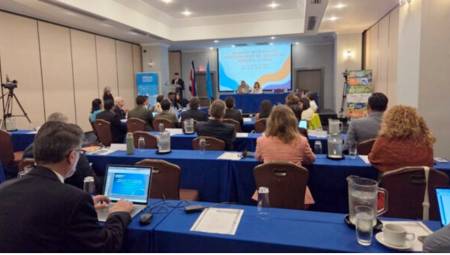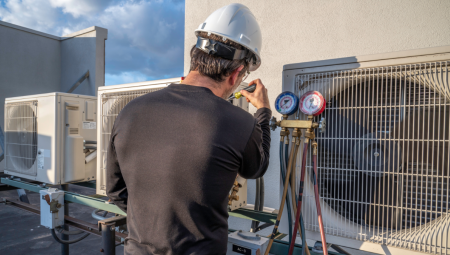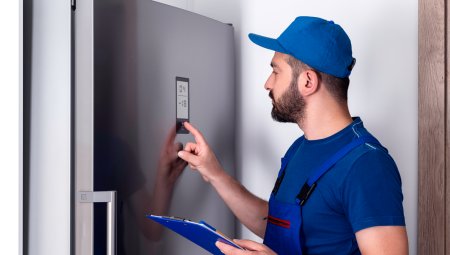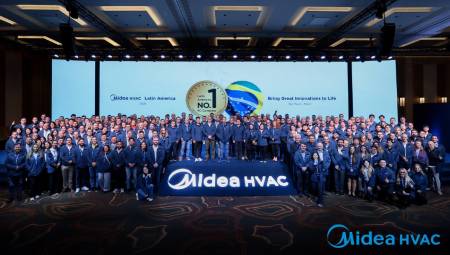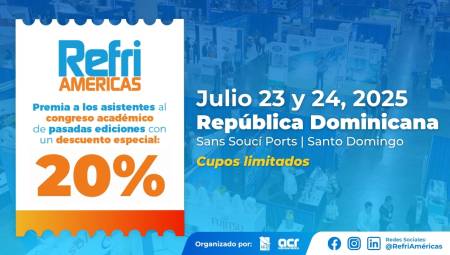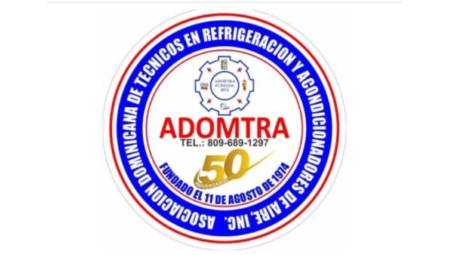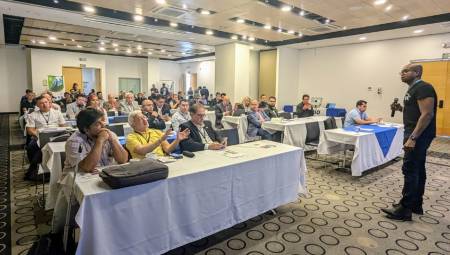By James M. Calm*
Recount: In the first part of this article, a review of the evolution of refrigerants from their oldest use to the present day was carried out, dividing the history into four generations. While in this installment we will try to address future guidelines and candidates.
Next generation of refrigerants
Refrigerant manufacturers responded quickly to the F-Gas directive, with announcements of new refrigerants. At least three multinational manufacturers reported their own development of innovative refrigerants to meet the GWP limit of 150 (DuPont, 2006; Honeywell, 2006; and INEOS Fluor, 2006). Considering the large market value of automotive refrigerant sales, it's safe to assume that most companies are looking for solutions, especially now that some of the largest companies are registered waiting to comply with F-gas standards.
These entities have published preliminary data on environment, safety and performance, but are restricting the full disclosure of refrigerant compositions for competitive reasons, as the final formulations are still being refined and because definitive data do not yet exist. Some of the major patents present an idea about the substances considered, either individually or as combined components (e.g., Singh et al., 2005, and Mnor et al., 2006). Table 1 expands on this information.
Patents suggest that some candidates and uses may require compatibilizers (such as anti-foam additives or metal surface deactivators), stabilizers (such as oxidation inhibitors), lubricant solubilizers, or other additives.
Some, if not all, of the manufacturers anticipate that the solutions or variants of the solutions identified to meet the requirements of Gas F will have greater application potential. DuPont (2006), Minor et al. (2006), and Singh et al. (2005) specifically identify increased application opportunities for both refrigerants in static refrigeration and air conditioning systems and for fire extinguishing applications and foam blowing agents. The perceived ease (with no apparent commitment to safety, durability or efficiency) concealed huge investments to develop the third-generation refrigerants and associated lubricants, to optimize and build manufacturing plants, to modify and qualify equipment and component designs (especially compressors), and to train installation, operation and maintenance technicians. The quick and highly optimistic responses to the GWP limit of Gas F for automotive refrigerants (the start of the next generation), represent a signal to regulators that there are refrigerant options that meet more sustainable environmental goals, rather than getting involved in the current Montreal and Kyoto Protocols.
However, four very important points must be taken into account. First, manufacturers had previously examined and even conducted limited testing of major replacement refrigerants. Records specifically document the testing of non-ODS refrigerants to replace CFCs, for example the continued use of R-134a in household refrigerators, more than ten years before the Montreal Protocol (Dupont, 1988). Except as combined components (such as R-152a in R-500 and R-23 in R-503), the industry avoided HFC refrigerants, based on lubricant considerations prior to the phase-out of ODS, although they were recognized as candidates in early 1928.
Second, replacement refrigerants are generally less efficient than previous options. With few exceptions, the efficiency gains that are achieved in machinery using alternative refrigerants are primarily derived from improvements in equipment design rather than the properties of newer working fluids. Simply put, better optimization with older refrigerants would have produced even greater efficiency in most cases and alternative refrigerants reduce margins for further improvements in product efficiency.
Third, none of the current candidate refrigerants is ideal and the future discovery of ideal refrigerants is extremely unlikely (Calm and Didion, 1997). The intense restrictions force to acquire new commitments between the different environmental, safety, performance, cost, and other objectives; they do not expand on the finite options available. And fourth, sequential attention to individual environmental problems risks the elimination of important (or even critical) options for balanced general solutions, based on the least (or even negligible) impact on individual problems (Wuebbles and Calm, 1997).
Balance between different environmental goals
With the new refrigerants, interesting questions arise about the balance between contradictory environmental objectives and between environmental goals and safety or compatibility. Phasing out the SDGs reduces the options for dealing with climate change from direct consequences or from indirect consequences such as energy-related emissions. Two examples are the conflicting goals for R-13I1 (CF3I, a fluoro-carbon dioxide, FIC) as a potential component in low-GWP automotive refrigerants (Singh et al., 2005) and R-123 (an HCFC) as a chiller refrigerant (Calm, 2006). These two refrigerants offer a short duration in the atmosphere, low GWP level, low acute inhalation toxicity and is non-flammable. Both are effective fire suppressants. However, both have low (but not zero) ODP, between 0.011 and 0.018 (modeled), depending on latitude or release altitude for R-13I1 and 0.02 semi-empirical (0.012 modeled) for R-123*. R-13I1 offers potential as a mixed component in combination with fluorinated olefins (unsaturated alkenes) to suppress flammability, minimizing both ODP and GWP. Despite being an SDG, although with a very low level of ODP, R-13I1 is not controlled by the Montreal Protocol as it was not in commercial use in 1992, which was the last time the substances were added to the Protocol.
R-123 is the most efficient refrigerant for water chillers, unlike R-11 and R-141b (UNEP, 2007a), both of which have significantly higher levels of ODP and higher levels of GWP. Still, R-123 was still in phase-out in Europe as an SDG and its phase-out is scheduled, except for a few reconsiderations, in new chillers towards 2020 in non-Article 5 countries and towards 2040 in Article 5 countries. R-123 has a very low overall impact on the environment due to its low ODP level, very low GWP level, very short duration in the atmosphere, very low emissions in current designs and efficiency (UNEP, 2007a).
The Montreal Protocol allows for limited production for service needs until 2030 in non-Article 5 countries. It imposes no limit anywhere for the continued use and service of existing equipment or refrigerants stored or recovered. These examples illustrate the clear contradictions in environmental objectives for dealing with ozone depletion and climate change. At least one recent assessment suggests a reconsideration of previous proposals in relation to the phase-out of all SDGs. This indicates that "the production and consumption of specific chemicals, which were found not to be harmful to the ozone layer, could be allowed after the assessment, making some adjustments to the Protocol" (UNEP, 2007b).
Comparing Figure 2 and Figure 3, as well as the options to be taken into account and the consequences of atmospheric ozone depletion and climate change, suggests greater difficulty and urgency for the mitigation of global warming. These comparisons challenge the routine elimination of the few options that have a negligible (or even imperceptible) influence on atmospheric ozone, but also the significant (or even strong) potential to mitigate global climate change. Both environmental problems are important, but the absence of ideal candidates who solve both problems together, without degrading safety, requires a balance between the objectives.
Although speculative, the creators of the Montreal Protocol would probably have taken more care in the wide elimination of chemicals according to their class, than through individual determination, if they had had the awareness they currently have about the severity of global warming and the recognition of the response limitations of the moment. However, the Protocol ensured future adjustments based on scientific assessments, which offers an option (albeit politically difficult) for reviews to deal with the few, but significant, cases of this type.
Other problems arise in environmental compensations. The main replacement selected by manufacturers for R-22, which is currently the most widely used refrigerant, is R-410A (a combination of R-32 and R-125 HFCs). Although this substitute offers virtually zero ODP, it increases GWP by 16% (from 1810 to 2100 for 100-year integration) and decreases the achievable efficiency for conventional air conditioners with simple cycles by 6% (Calm and Domanski, 2004). Product refinements make it possible to adjust (or even improve) the efficiencies of standard sorting conditions, especially with the exploitation of the upper thermal transfer of the mixture, but the opportunity for future performance improvement is less.
In addition, the efficiency of R-410A degrades more rapidly than that of R-22 at higher ambient temperatures approaching the critical temperature of R-125, so maximum energy demand is higher with R-410A for air cooling systems for the same classified seasonal efficiencies. That disadvantage is especially significant when we consider expensive electricity generation, although it is more sustainable. Similarly, R-32 and some other R-32 mixtures (although marginally flammable) avoid this concern and offer higher efficiencies and lower GWP levels (Calm and Domanski, 2004).
Fluoro-olefins, like those considered to be low-GWP automotive refrigerants, are generally more reactive than composites, with only single carbon-carbon bonds. This reactivity implies a shorter duration in the atmosphere, lower levels of ODP (for those containing chlorine, bromine or iodine) and lower gwp level, but also implies lower stability and greater toxicity. Similarly, chemicals with the lowest GWP levels tend to decompose near the surface, predominantly in proximity to the release site. Some may be creators of smog and others may decompose or contribute directly or catalytically to the formation of other chemicals with a higher level of GWPs than the original chemical, thus presenting higher indirect levels of GWP than direct, and the influences of temperature, latitude, altitude and even the presence of other air pollutants, complicate the determination of net GWP levels for them.
The resolution of these complications is beyond the scope of this document. The topic is presented only to illustrate the complex interactions and inevitable trade-offs (commitments) between environmental goals, even beyond consideration of ozone depletion and global warming or between the impacts of emissions related to refrigerants ("direct effect") and those related to energy (sometimes identified as "indirect effect", which is not the same as indirect GWP).
Conclusions
Based on scientific findings, regulatory requirements and market pressures, a fourth generation of refrigerants seems imminent by 2010. The regulatory selection criteria for the new generation will add low GWP levels (initially 150 or less and determined for a 100-year integration) to the old requirements for suitability, safety and material compatibility. With recognition of the potential for additional environmental concerns and implicit for fluorochemicals to meet the new GWP limits, short duration in the atmosphere should also be one of the criteria. More importantly, the new generation must offer high efficiency or the shift to treat low GWP levels will have the reverse effect and produce higher net GHG emissions rather than decrease them.
Although current regulatory pressures are focused on mobile air conditioners, future expansion to other applications is almost certain. Many refrigerants currently considered as new alternatives, including many HFCs, could become old waste. Given the scarcity of viable options, future refrigerant selections ensure a collective consideration of all environmental issues together, with integrated assessments rather than incremental treatments that jeopardize the elimination of good overall options to achieve fewer (or even imperceptible) impacts to individual problems.
*Engineering Consultant
Email: [email protected]



